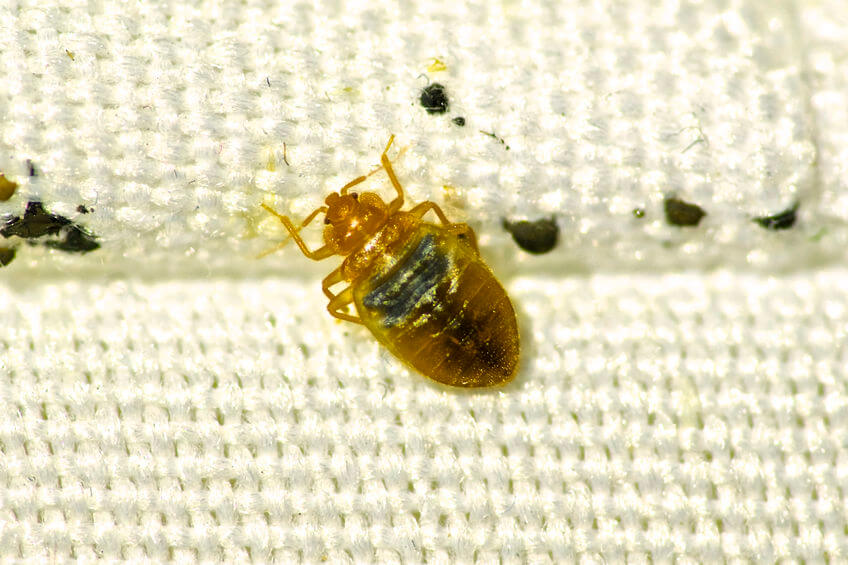Comprehending the Lifecycle of Pests for Targeted Control Techniques
Understanding the lifecycle of parasites is a fundamental aspect of reliable insect monitoring strategies. By understanding the different phases of advancement that parasites undertake, a much more exact and targeted technique can be adopted to manage their populations. This knowledge not just clarifies the susceptabilities within the bug lifecycle but additionally leads the way for executing critical measures that can disrupt their development and reproduction cycles. Through a much deeper understanding of just how pests grow and evolve, customized control methods can be designed to address certain factors in their lifecycle, eventually causing even more successful insect monitoring outcomes.
Relevance of Understanding Insect Lifecycle
Understanding the lifecycle of bugs is important for establishing effective and targeted control strategies in bug management. By comprehending the numerous phases a pest undergoes from egg to adult, bug control specialists can recognize susceptible factors in the lifecycle where treatment can be most successful. For example, knowing when larvae are most energetic can aid establish the optimal timing for using larvicides. Additionally, comprehending the life expectancy of a parasite species can assist in predicting populace development patterns and possible infestation dangers.
In addition, acknowledging the details ecological conditions needed for every stage of the pest's lifecycle can assist choices on environment modification or exclusion techniques to interrupt the lifecycle and lower parasite populations. This knowledge enables pest administration specialists to carry out positive procedures as opposed to relying solely on responsive treatments, bring about even more long-term and sustainable insect control remedies. Ultimately, a comprehensive understanding of insect lifecycles equips bug control practitioners to customize their approaches effectively, making best use of and decreasing ecological impacts control end results.
Key Stages in Parasite Advancement
To successfully carry out targeted control strategies in insect administration, a critical element exists in comprehensively identifying and comprehending the vital phases in insect development. Insect advancement generally is composed of several crucial phases that are critical for their lifecycle and administration.

Susceptabilities in Parasite Lifecycle
Throughout the different stages of a pest's lifecycle, unique susceptabilities arise that can be strategically targeted for efficient control procedures. One vital susceptability lies in the egg phase, where parasites are typically a lot more vulnerable to particular pesticides or biological control agents due to their soft outer shell, making them easier targets for treatment. Furthermore, the nymph or larval stage presents vulnerabilities as insects undergo rapid development and advancement, needing high power usage that can be made use of by interrupting their food sources or presenting development inhibitors. Pupal stages, characterized by immobility and makeover, provide a home window for targeted control via physical obstacles or specific therapies that impede successful emergence. Ultimately, grown-up pests, while more resistant due to their reproductive capability, can still be vulnerable during breeding or egg-laying tasks, which can be interrupted through scent traps or sanitation strategies. Comprehending these susceptabilities in the parasite lifecycle is vital for developing exact and efficient control approaches that efficiently take care of bug populaces while decreasing environmental influence.
Carrying Out Targeted Control Steps

Applying targeted control actions usually entails a multi-faceted approach. This might include habitat alteration to make the setting less congenial important site to insects, such as getting rid of standing water for insect control or securing entry points for rodents. In addition, biological control techniques can be utilized, where natural killers or microorganisms are introduced to maintain parasite populations in check.
Integrated Bug Management (IPM) strategies that integrate different control measures in a collaborated and sustainable fashion are commonly the most efficient in achieving long-lasting bug monitoring objectives. By applying targeted control measures based on an extensive understanding of insect lifecycles, parasite populaces can be effectively managed while reducing dangers to human health and wellness and the environment.
Boosted Parasite Monitoring Practices

In addition, the incorporation of organic control agents, such as natural predators or virus of bugs, can help in reducing dependence on chemical pesticides and advertise an extra balanced ecosystem. Executing physical obstacles and catches can likewise become part of boosted parasite administration practices, using non-toxic and targeted options for parasite control. Additionally, using scents and various other semiochemicals can interrupt pest breeding patterns and interaction, leading to reduced parasite populations in time.
Verdict
By identifying crucial stages in bug development and vulnerabilities in their lifecycle, targeted control steps can be implemented to minimize pest populations. Enhanced insect monitoring practices can aid lower the reliance on broad-spectrum pesticides and promote even more environmentally pleasant and sustainable pest control methods.
Comprehending the lifecycle of pests is crucial for establishing effective and targeted control strategies in pest monitoring. By understanding the various phases a parasite goes best site with from egg to adult, insect control experts can determine prone points in the lifecycle where intervention can be most successful. Ultimately, a complete understanding of pest lifecycles encourages insect control experts to customize their strategies efficiently, maximizing and reducing ecological effects control results.
By implementing targeted control steps based on a comprehensive understanding of pest lifecycles, parasite populations can be successfully managed while minimizing risks to human health and wellness and the setting.
By recognizing key stages in insect development and susceptabilities in their lifecycle, targeted control measures can be executed to reduce parasite populations.